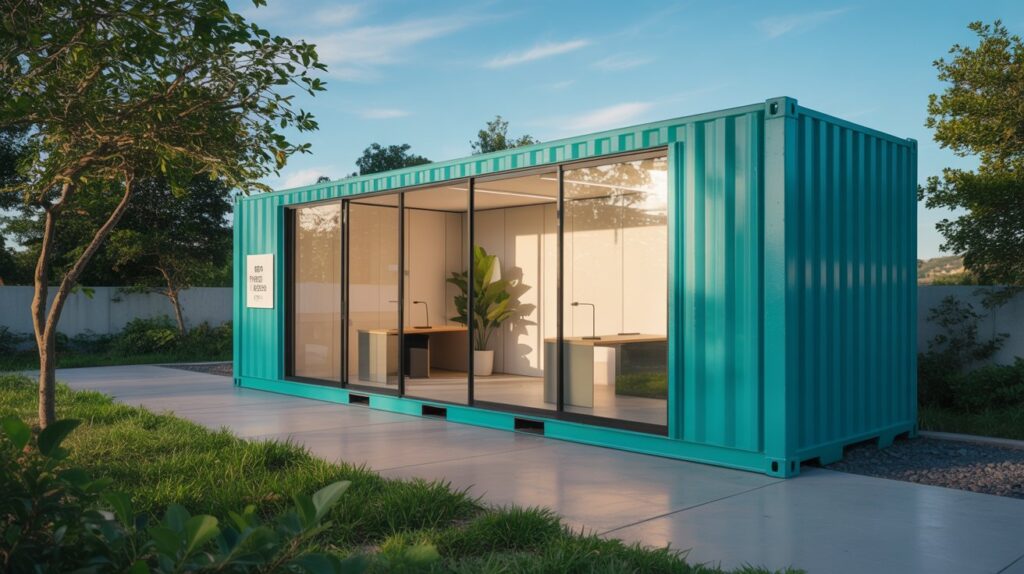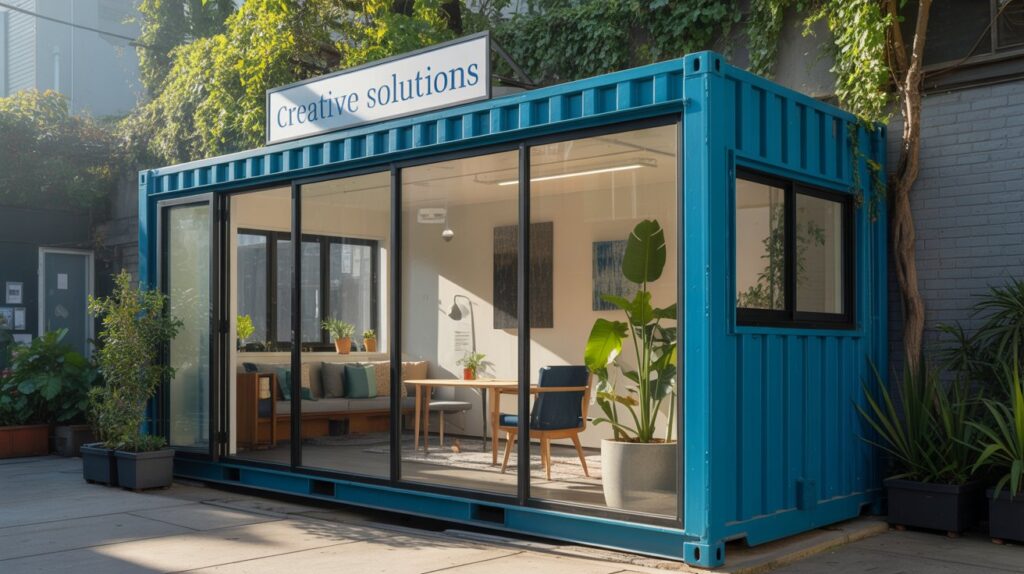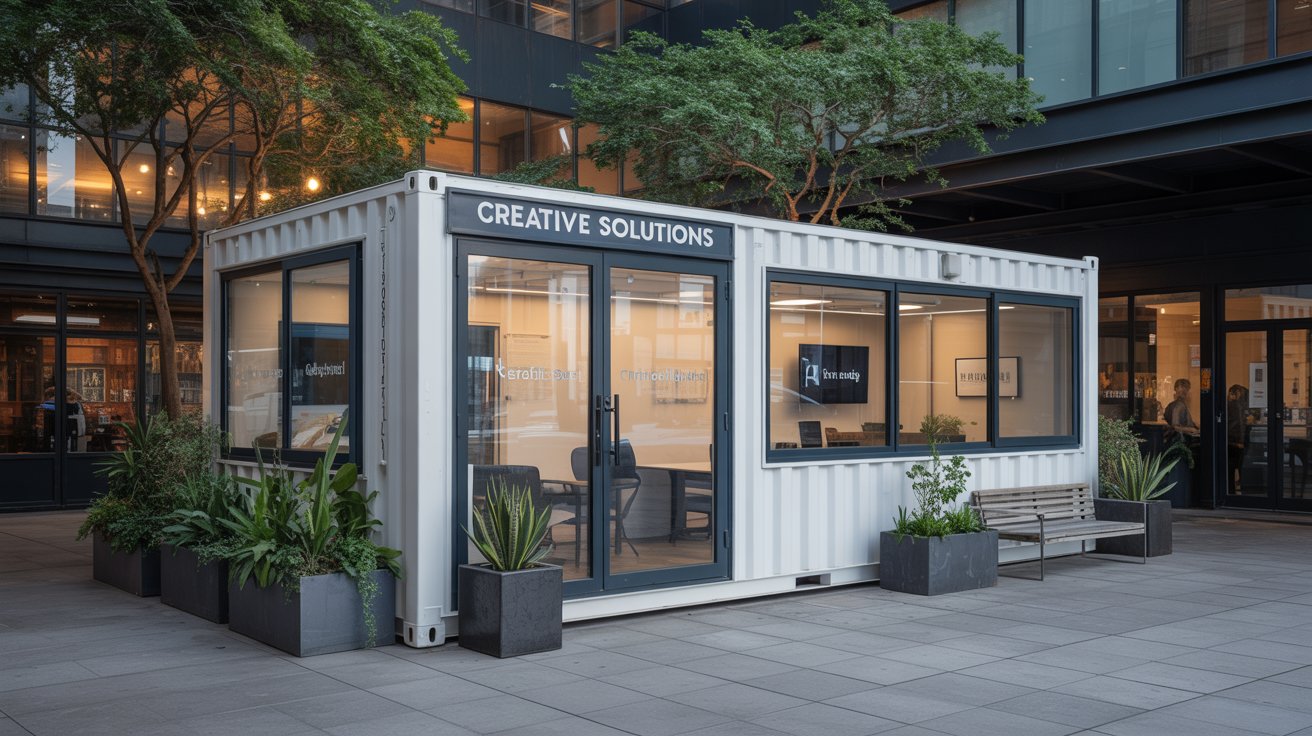Can the concept of turning shipping containers into innovative office spaces captivate your imagination and inspire creativity in your work environment? In a world that increasingly emphasizes sustainability, adaptability, and efficiency, the idea of repurposing shipping containers for office spaces is becoming a fascinating and popular trend. Utilizing shipping containers for offices might sound unconventional at first, but this approach is both innovative and functional, providing a range of benefits for businesses and individuals alike. Let’s take a closer look at why this trend is gaining traction and how it can serve your workspace needs.
Understanding the Appeal of Shipping Container Offices
Shipping container offices have become an intriguing solution for modern workspace challenges. They’re not just for eco-conscious businesses or startups operating on tight budgets; these structures appeal to a wide range of industries due to their versatility and affordability.
Versatility and Customization
One of the greatest advantages of using shipping containers is their inherent versatility. You have the option to customize these sturdy structures to meet specific needs, from small individual offices to expansive collaborative spaces. Containers can be stacked, joined, or modified in various configurations to fit your vision. With a bit of creativity and design, shipping containers can be transformed into attractive office spaces that complement your organization’s culture and brand.
Cost-Effectiveness
Traditional office construction can be expensive and time-consuming. In contrast, modifying a shipping container is often much cheaper and faster. You save on materials, labor, and construction time. By reducing these costs, your budget can be allotted to other critical areas of your business, such as hiring or advanced technology.
Sustainability and Eco-Friendliness
Reusing shipping containers helps reduce waste and promotes environmental sustainability. When you choose to convert a shipping container into an office, you’re essentially engaging in an eco-friendly practice by giving new life to retired containers that might otherwise become scrap metal. This decision can align perfectly with your company’s sustainability goals and help reduce your carbon footprint.
The Practical Considerations
While the idea is exciting, there are practical considerations you must evaluate to ensure a successful transition from a traditional office setup to a shipping container office.
Structural Integrity and Safety
Shipping containers are initially built to withstand harsh conditions at sea, making them incredibly strong and durable. However, when converting them into office spaces, you must ensure that they comply with local building codes and regulations. It’s crucial to work with architects and engineers who specialize in container conversions to ensure the safety and longevity of your new office space.
Climate Control
Shipping containers are made of steel, which can conduct heat and cold. Proper insulation and climate control systems are essential to maintain a comfortable working environment. The interior of your container office must be equipped with adequate HVAC systems to tackle extreme weather fluctuations, ensuring comfort for all seasons.
Space Optimization
While containers provide a unique and customizable space, they generally have a fixed width that can restrict spatial design. Strategic planning and creative solutions are needed to maximize space without compromising functionality. Incorporating multipurpose furniture, efficient storage solutions, and open-plan layouts can help make the most of the available space.

Designing Your Shipping Container Office
Now that you’re aware of the practicalities, it’s time to think about design elements that can transform these containers into a welcoming and productive office environment.
Layout and Interior Design
The interior of a shipping container can be tailored to fit your organization’s specific needs. Open-plan layouts are popular for encouraging teamwork and communication, while separate enclosed offices might be necessary for private work or meetings. Pay attention to the balance of light and space. Large windows can bring in natural light and make the interior feel roomier and more inviting.
Furniture and Decor
Choosing the right furniture and decor is essential to create a functional and aesthetically pleasing environment. Opt for flexible, ergonomic furniture that can adapt to different tasks and positions. Incorporate elements that reflect your company culture and branding, whether it’s through color schemes, artwork, or innovative furniture design.
Energy Efficiency
Energy efficiency is a critical aspect of sustainable design. Consider installing solar panels, energy-efficient lighting, and water-saving plumbing fixtures. These features not only contribute to sustainability but can also lead to long-term cost savings on utility bills.
Case Studies: Success Stories in Container Offices
The adaptive reuse of shipping containers for commercial offices has emerged as a sustainable, cost-effective solution in urban real estate markets. This case study compares two pioneering projects:
- Salt Lake City’s ContainerSpace Complex – A standalone, modular office park using 20 repurposed containers, delivering 40% cost savings and 95% occupancy within six months.
- The Farm SoHo in NYC – A creative hybrid workspace integrating 12 containers within a historic bakery, achieving 100% occupancy by blending industrial heritage with modern functionality.
Key Findings:
- Cost Efficiency: Both projects demonstrated 35-40% cost reductions compared to traditional construction.
- Speed to Market: Completed in 4-5 months versus 12+ months for conventional builds.
- Market Demand: High occupancy rates (95-100%) prove strong tenant appeal for container-based offices.
- Design Versatility: Effective in both new developments (SLC) and historic renovations (NYC).
- Policy Impact: Successful projects are influencing urban zoning codes for modular construction.
Project Comparison Overview
Below, detailed tables compare their approaches, performance metrics, and lessons learned.
| Feature | Salt Lake City Offices | The Farm SoHo, NYC |
|---|---|---|
| Location | Standalone complex in urban district | Adaptive reuse of historic bakery |
| Developer | ContainerSpace (modular specialists) | The Farm SoHo (co-working operator) |
| Year Completed | 2018 | 2015 |
| Scale | 20 containers | 12 containers + preserved industrial space |
| Key Design Focus | Cost efficiency & modularity | Hybrid historic-modern aesthetic |
Performance Metrics
| Metric | Salt Lake City | NYC Bakery Adaptation | Industry Standard |
|---|---|---|---|
| Construction Cost Savings | 40% lower | 35% lower | Baseline |
| Build Time | 4 months | 5 months | 12-18 months |
| Energy Efficiency Gain | 25% reduction | Not specified | N/A |
| Occupancy Rate (6 months) | 95% | 100% | 80-85% (urban avg) |
Design & Sustainability Features
| Element | Salt Lake Solution | NYC Innovation |
|---|---|---|
| Structural Approach | Freestanding L-shaped layout | Containers integrated into bakery shell |
| Materials Reuse | 40,000 lbs steel recycled | 12 containers diverted + original bakery features preserved |
| Natural Light | Large windows + skylights | Glass doors + strategic cuts in containers |
| Unique Amenities | Communal courtyards | Rooftop terrace + kitchen in old oven space |
Market Response & Challenges
| Factor | Utah Project | NYC Project |
|---|---|---|
| Primary Tenant Mix | Tech startups & small businesses | Creative agencies & remote workers |
| Biggest Zoning Hurdle | “Temporary structure” classification | Historic preservation requirements |
| Community Perception | Initial skepticism overcome via open houses | Celebrated for architectural creativity |
| Scalability Lessons | Inspired city policy changes | Demonstrated viability in premium market |
These cases demonstrate how shipping containers can address commercial real estate challenges while meeting sustainability goals and tenant needs for flexible, inspiring workspaces.
Sources:

Overcoming Challenges
Every innovation has its hurdles, and shipping container offices are no exception. Awareness of these challenges and proactive planning can make the transition smoother and more successful.
Compliance and Permits
Navigating zoning laws and permit requirements is essential when setting up shipping container offices. Engage with local authorities early in the process to ensure compliance with all necessary regulations.
| Challenge | Solution |
|---|---|
| Compliance Issues | Consultation with local authorities |
| Climate Control | Install insulation and HVAC systems |
| Space Limitations | Optimize with smart design and furniture |
Transportation and Installation
Transporting containers to your desired location and installing them can be logistically challenging. Work with experienced transportation and construction professionals to ensure a smooth and timely setup.
Community Acceptance
Gaining community support may be necessary, especially in residential areas where unconventional structures can face opposition. Hosting open houses and demonstrating the benefits of these spaces can help ease concerns and build trust.
The Future of Shipping Container Offices
The trend of utilizing shipping containers as office spaces is poised for growth as more companies recognize their potential. With sustainability becoming an increasingly important consideration, this concept will likely inspire further innovations in green building practices. Incorporating smart technology and eco-friendly solutions will enhance the functionality and appeal of container offices in the years to come.
Could shipping container offices be the innovative solution your company needs? By embracing this creative opportunity, you can position yourself at the forefront of sustainable workspace design, leading the way for others to follow. Whether you’re a startup on a budget or an established company aiming to reduce your carbon footprint, shipping container offices offer a unique blend of practicality, style, and environmental responsibility.
Conclusion
Shipping containers offer a sustainable, cost-effective, and versatile alternative for office spaces. When considering this option for your business, you must weigh the practical considerations, design possibilities, and potential challenges. With careful planning and execution, shipping container offices can be a dynamic and functional addition to your organizational infrastructure.
Exploring this innovative concept allows you to reimagine the traditional office in an exciting way, fueling creativity and productivity while respecting environmental commitments. So, can a shipping container become your next office? With all the considerations in mind, it surely can be an inspired choice that leads to new possibilities.

